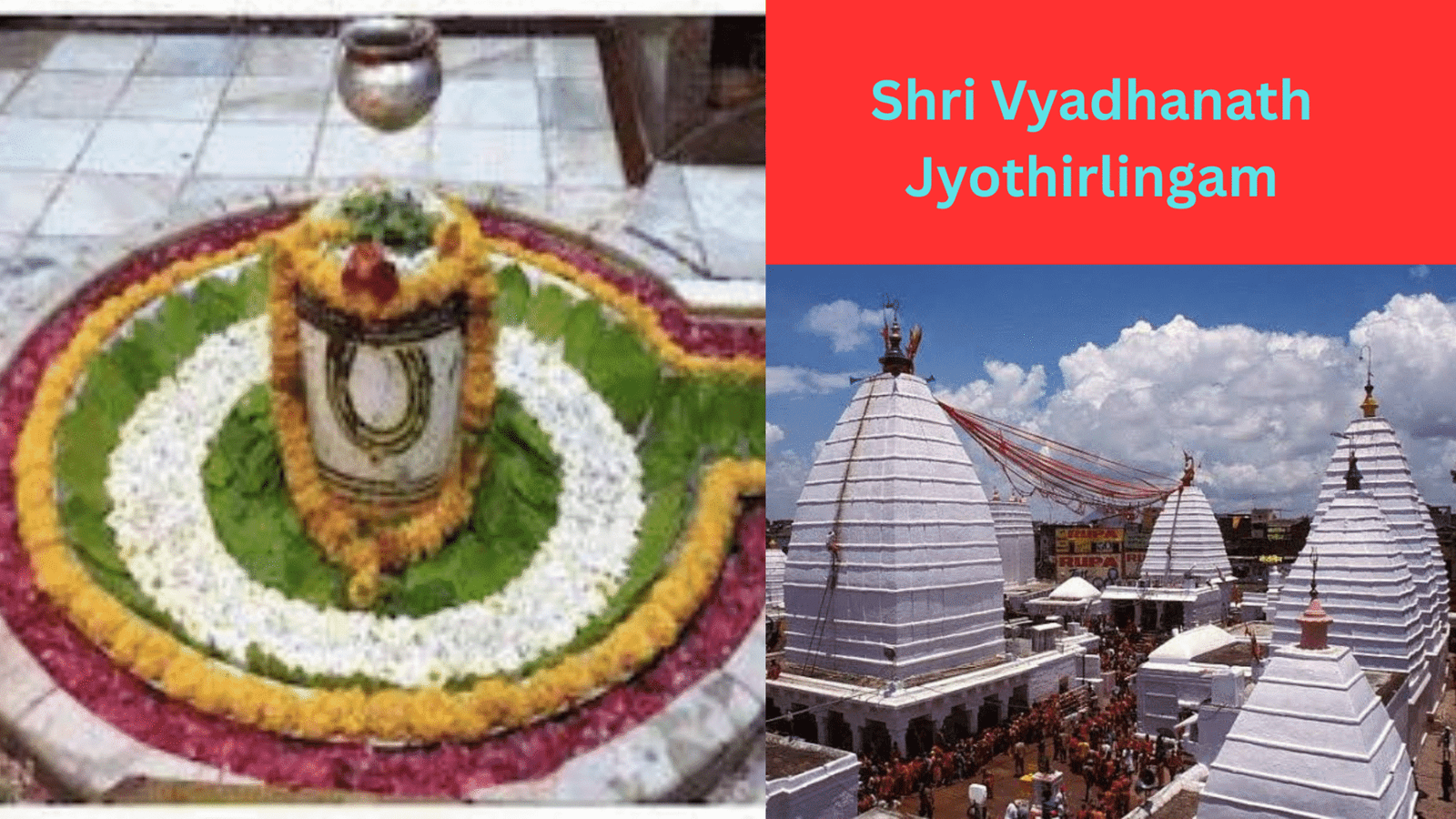Shri Vaidyanath Jyotirlingam – Fifth Jyothirlingam in the 12 Jyothirlinga Series
Among the revered 12 Jyotirlingas of Lord Shiva in India, the Shri Vaidyanath Jyotirlingam stands as a powerful symbol of divine healing, salvation, and timeless devotion. Located in Deoghar, a serene town in the state of Jharkhand, this temple is one of the holiest pilgrimage sites for Shaivites and is deeply connected to Lord Shiva’s role as the Supreme Healer—Vaidya.
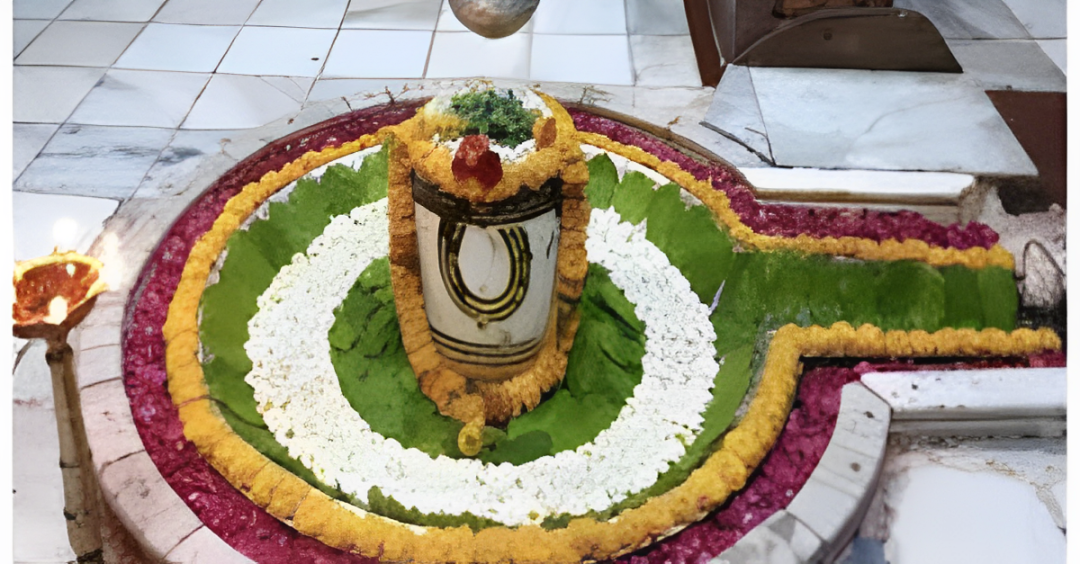
This comprehensive guide will explore the spiritual significance, mythology, architecture, rituals, festivals, travel tips, and nearby attractions of the sacred Shri Vaidyanath Temple.
Whether you’re a devotee seeking divine blessings or a traveler on a spiritual journey, this guide offers everything you need to experience the essence of Shiva’s healing power.
The Spiritual Significance of Vaidyanath Jyotirlingam
The name “Vaidyanath” comes from “Vaidya” (doctor) and “Nath” (Lord)—Lord Shiva here is worshipped as the Supreme Healer who cures the physical, emotional, and spiritual ailments of his devotees.
This Jyotirlinga is believed to grant moksha (liberation) and long life, and is especially revered by those seeking relief from chronic illnesses. The temple is a major pilgrimage destination for Kanwariyas, who carry holy water from the Ganges during the month of Shravan to offer to the deity.
Shri Vaidyanath Jyotirlingam is not only one of the 12 Jyotirlingas but is also considered one of the 51 Shakti Peethas, where the heart of Sati (Goddess Parvati) is believed to have fallen.
Mythological Origin of Vaidyanath Jyotirlingam
Multiple legends enrich the spiritual power of the temple, the most well-known being the story of Ravana, the demon king of Lanka.
Ravana’s Devotion
Ravana, an ardent devotee of Lord Shiva, performed intense penance and asked Shiva to come to Lanka. Lord Shiva granted his wish and gave him the Jyotirlinga, warning that it must not be placed on the ground or it would remain fixed at that spot.
On his way to Lanka, Ravana stopped at Deoghar to perform his evening prayers. He handed the lingam to a young boy (Lord Vishnu in disguise) with strict instructions not to place it down. The boy agreed but eventually placed the lingam on the ground. Ravana tried to lift it, but it had become immovable. Frustrated, he pressed the lingam with force, causing it to sink into the ground.
Thus, the Jyotirlinga was established at Deoghar, where Lord Shiva is worshipped as Vaidyanath—the one who heals and grants peace.
Also read: Shri Omkareshwar Jyotirlingam: A Complete Guide To The Sacred Shiva Temple
Historical Background
The temple has a rich historical legacy, referenced in ancient texts like the Shiva Purana, Skanda Purana, and the Ramayana. Over the centuries, various Hindu dynasties, including the Pala kings, Raja Man Singh, and local rulers, contributed to the development of the temple complex.
Even today, the temple’s architecture and rituals reflect centuries of unbroken devotion, making it a living monument of faith and tradition.
Temple Architecture and Layout
The Vaidyanath Temple complex is a stunning example of Nagara-style architecture, simple yet spiritually charged.
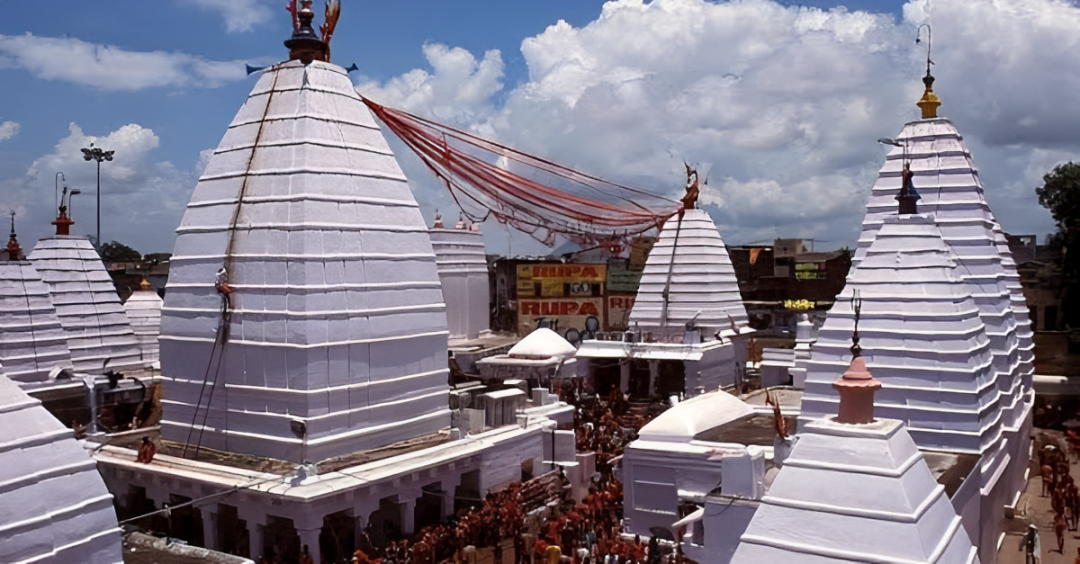
Key Features
Main Temple (Sanctum): Houses the Jyotirlinga, which is slightly convex and rests within a square basin.
Height: The central spire rises to about 72 feet, adorned with golden urns and flags.
Complex: Includes 22 other temples dedicated to various gods and goddesses like Parvati, Ganesha, and Kalabhairav.
Entry Gate: Known as Singh Dwar, this grand entrance welcomes thousands of devotees daily.
Temple Tank: Devotees bathe in the Shivaganga Kund before darshan.
The sanctum’s tranquil atmosphere and the sacred vibration of mantras create a deep spiritual experience for all who enter.
Rituals and Daily Worship
The Shiva Lingam at Vaidyanath is worshipped multiple times a day by priests and pilgrims with intense devotion and reverence.
Daily Schedule
Opening Time: 4:00 AM
Morning Aarti: 4:30 AM to 6:00 AM
Midday Pooja: 12:00 PM
Evening Aarti: 7:30 PM to 9:00 PM
Closing: 10:00 PM
Main Rituals
Jalabhishek: Holy water, mostly from the Ganges, is poured over the Jyotirlinga.
Milk and Honey Abhishek: Performed by devotees for health and prosperity.
Bilva Patra Offering: A key part of Shiva worship.
Special Poojas: Available for health, healing, and success in life.
During Shravan Maas (July–August), special poojas are held daily with lakhs of Kanwariyas participating in the rituals.
Major Festivals Celebrated
Shri Vaidyanath Temple is a vibrant hub during Hindu festivals, especially those associated with Lord Shiva.
1. Shravan Mela (Shravani Mela)
Held during the month of Shravan (July–August).
Over 7–8 million Kanwariyas walk for over 100 km from Sultanganj carrying Ganga water to offer at the Jyotirlinga.
The temple remains open 24×7 for the entire month.
2. Maha Shivaratri
Night-long prayers, dance, and chants glorifying Lord Shiva.
Thousands of devotees perform Rudrabhishek and Jaagran.
3. Diwali and Kartik Purnima
The temple is lit up with thousands of diyas.
Spiritual events, bhajans, and poojas are conducted.
4. Holi and Basant Panchami
Celebrated with color and devotion.
These festivals are the best times to witness the spiritual energy and cultural richness of Vaidyanath Dham.
How to Reach Shri Vaidyanath Jyotirlingam (Deoghar)
Deoghar is well-connected via air, rail, and road.
By Air
Deoghar Airport (DGH): Opened in 2022. Regular flights from Delhi, Ranchi, and Kolkata.
Nearest Major Airport: Ranchi Airport (265 km)
By Rail
Deoghar Railway Station (DGHR): Direct trains from Kolkata, Patna, Ranchi, and Varanasi.
Jasidih Junction (JSME): Major railhead just 7 km away.
By Road
Well-connected to Ranchi, Patna, Bhagalpur, and Kolkata.
Regular bus services and taxis are available.
Where to Stay in Deoghar
A wide range of accommodations is available for every budget.
Temple Trust Guest Houses:
Baidyanath Dham Dharamshala
Baba Mandir Guest House
Gita Bhawan
Budget and Luxury Hotels:
Clarks Inn Amaya, Deoghar
Hotel Yatrik
Hotel Mahadev Palace
OYO Rooms and budget stays near the temple
The Advance booking is advised during the Shravan Mela or festival seasons.d
Nearby Attractions and Sacred Sites
Beyond the Jyotirlinga, Deoghar is a spiritually rich town filled with temples and holy sites.
1. Shakti Peetha – Maa Parvati Temple
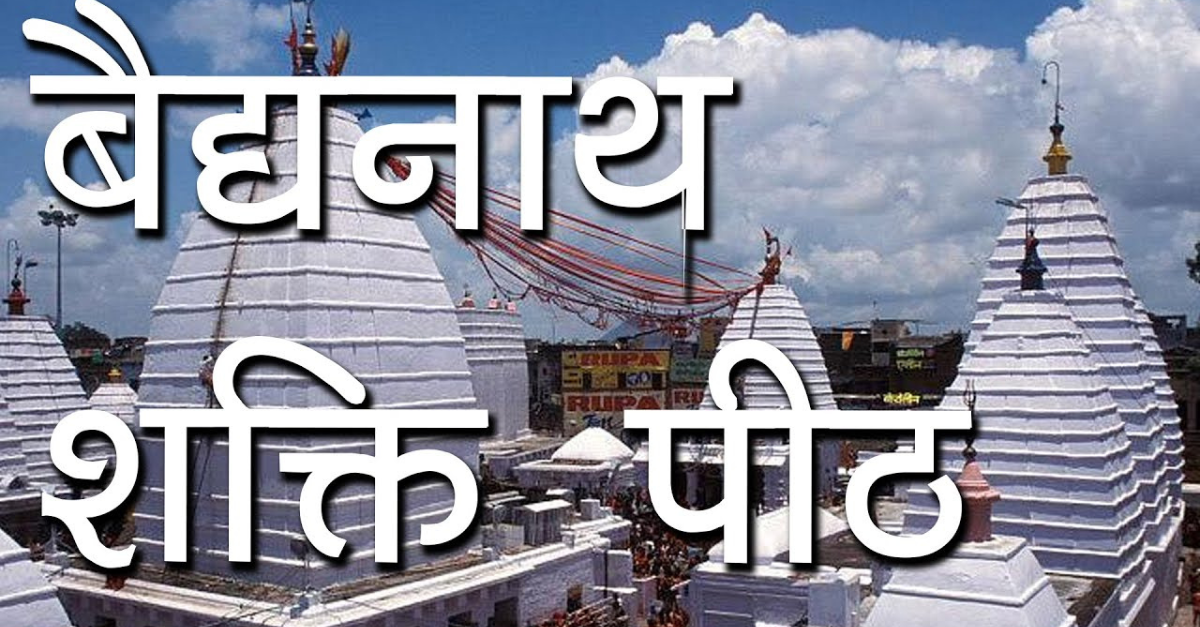
Located in the same temple complex, believed to be one of the 51 Shakti Peethas where Sati’s heart fell.
2. Tapovan Caves and Hills
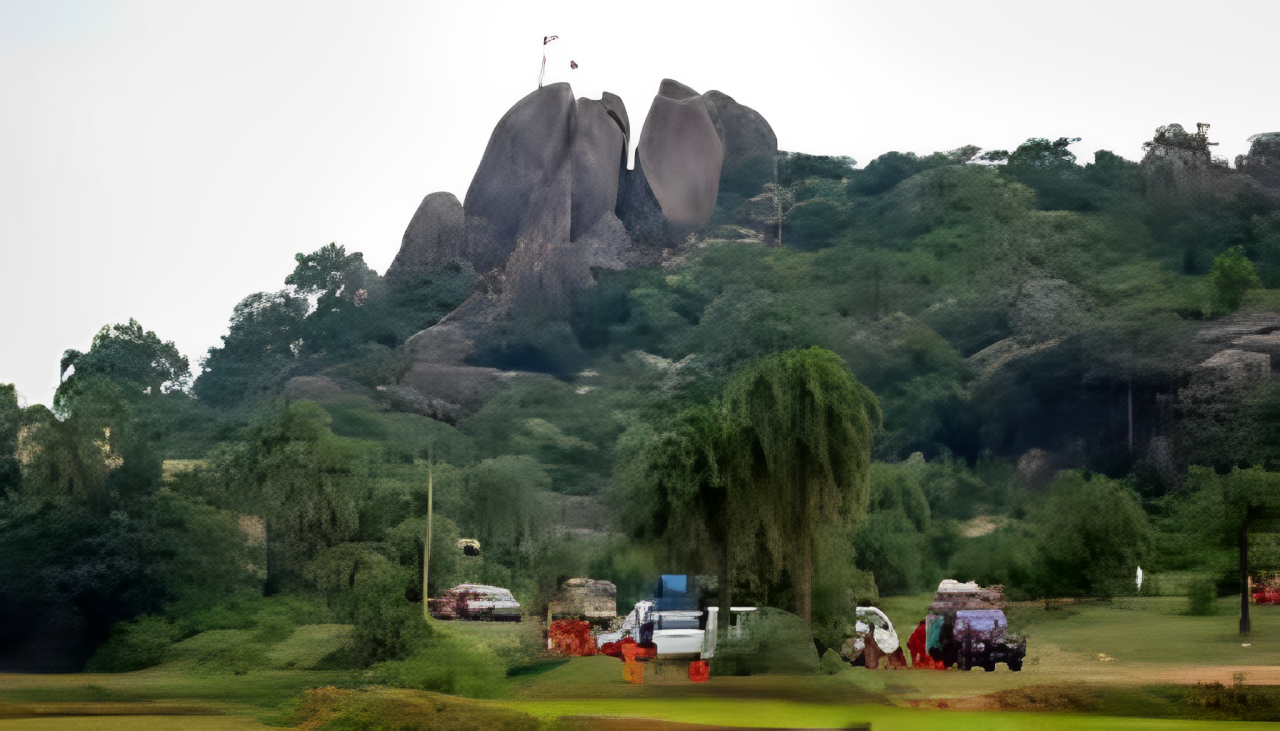
Associated with Sage Valmiki and other sages, these caves offer scenic views and spiritual peace.
3. Naulakha Mandir
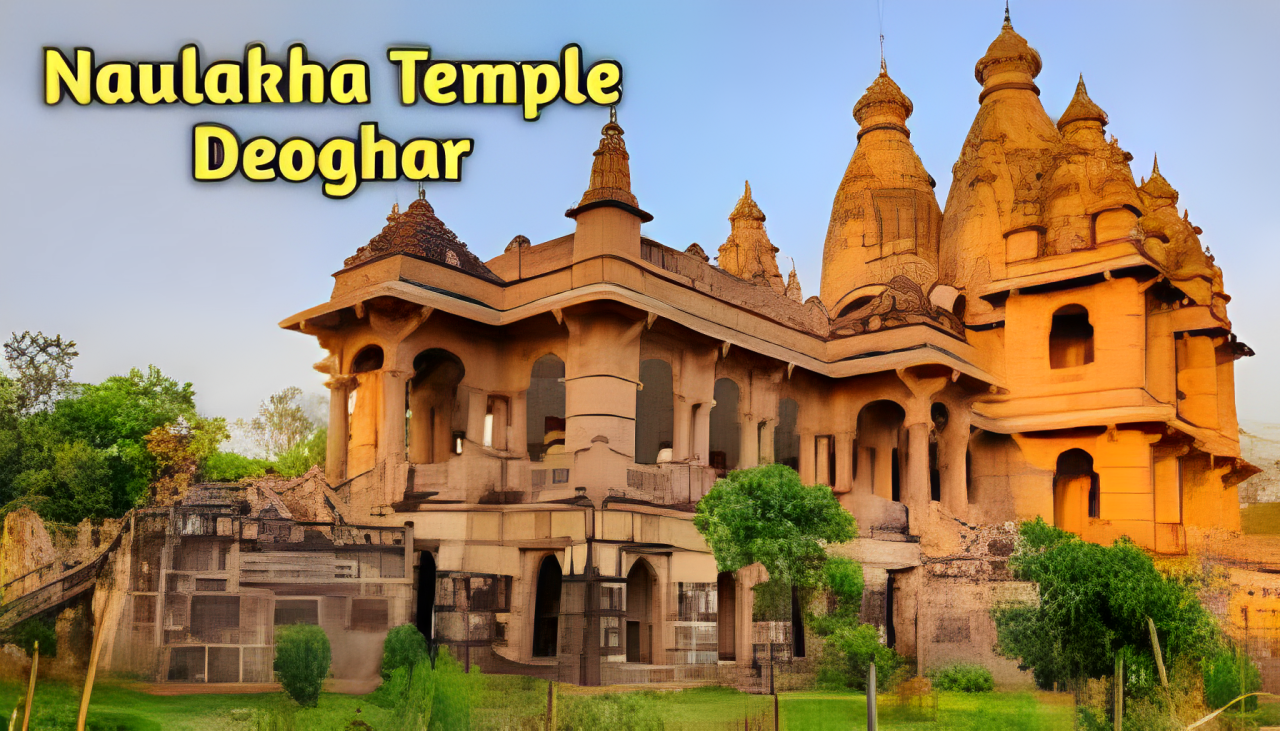
Built with an investment of ₹9 lakh (hence the name), it’s dedicated to Radha-Krishna and resembles the Ramakrishna Mission temple in Belur.
4. Trikut Parvat
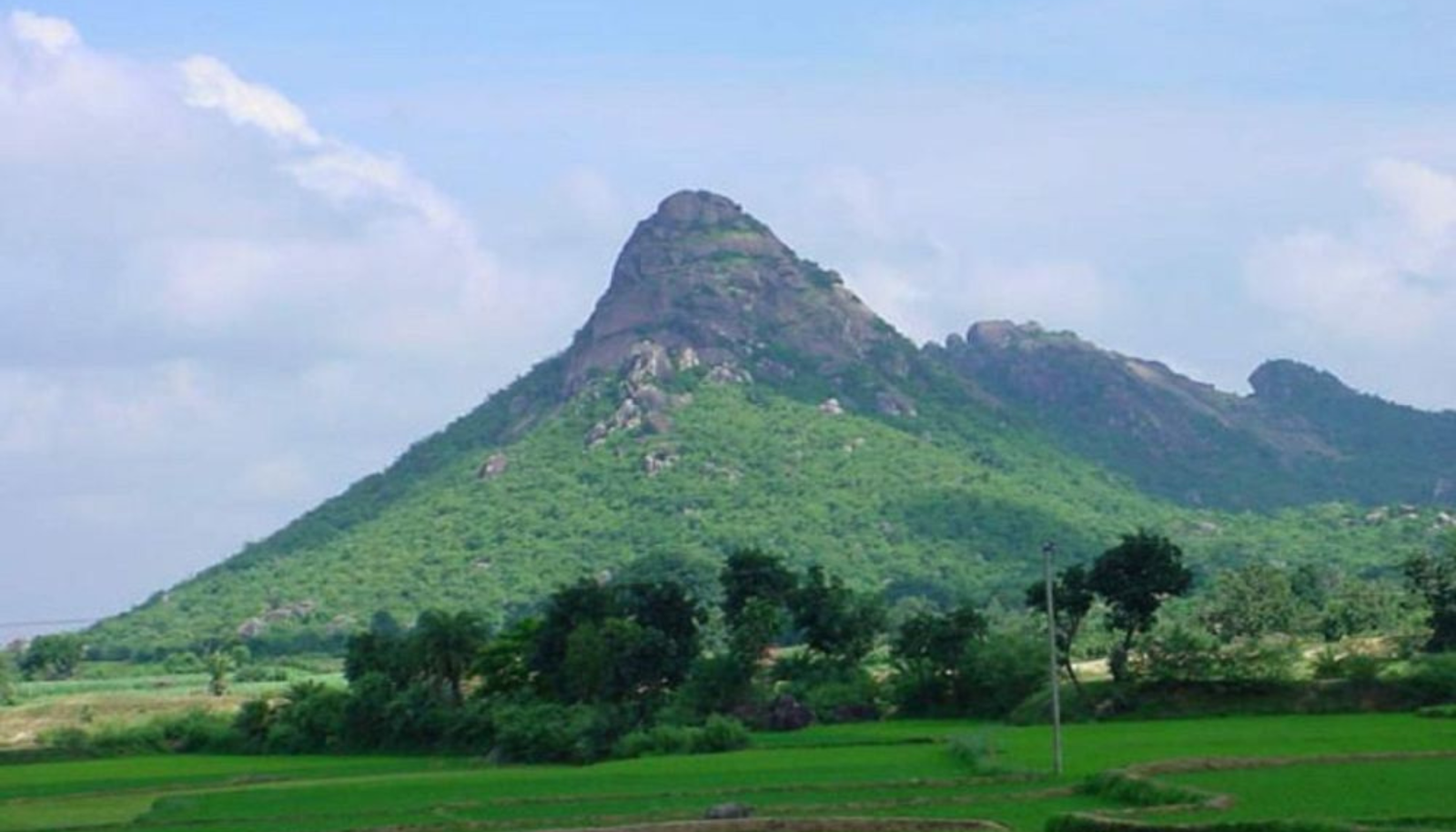
A scenic mountain range is nearby with ropeway facilities. It’s believed that Brahma, Vishnu, and Mahesh meditated here.
5. Shivganga Kund

A sacred water tank believed to have healing powers. Most devotees take a dip before darshan.
Best Time to Visit
The temple is open year-round, but certain times enhance the spiritual experience.
Ideal Month
October to March: Pleasant climate and ideal for sightseeing.
July–August (Shravan): Highly spiritual but extremely crowded.
February/March: Maha Shivaratri celebrations are grand and vibrant.
Tips for Devotees and Visitors
Avoid weekends during Shravan if you prefer less crowd.
Keep footwear and phones in designated lockers.
Follow the queue system—VIP darshan passes are also available.
Maintain cleanliness and respect temple customs.
Carry ID proof—may be required for pooja bookings or guest house check-in.
Also explore: 4 Cities In India That Shine Through The Rain
Online Services and Official Website
The temple trust offers a range of digital services for convenience:
Online Darshan and Live Aarti
Pooja Booking
Donation Services
Accommodations & Dharamshala Booking
Festival Event Schedules
Official Website: https://babadham.org (or search for Deoghar Baba Dham official site)
Shri Vaidyanath Jyotirlingam is a divine confluence of faith, healing, and spiritual liberation. Whether you visit during the holy month of Shravan or seek solitude in the temple’s sacred vibrations, Baba Vaidyanath’s blessings are believed to cure diseases, cleanse karma, and awaken higher consciousness.
This sacred Dham in the heart of Jharkhand invites every seeker to surrender their pain and receive divine grace from Lord Shiva, the Eternal Healer.
So, fill your heart with devotion, your hands with Ganga water, and your voice with “Om Namah Shivaya”—and step into the healing sanctuary of Shri Vaidyanath Jyotirlingam, where faith cures all.
Do follow svhubstuff for more curated travel and tourism updates!!


